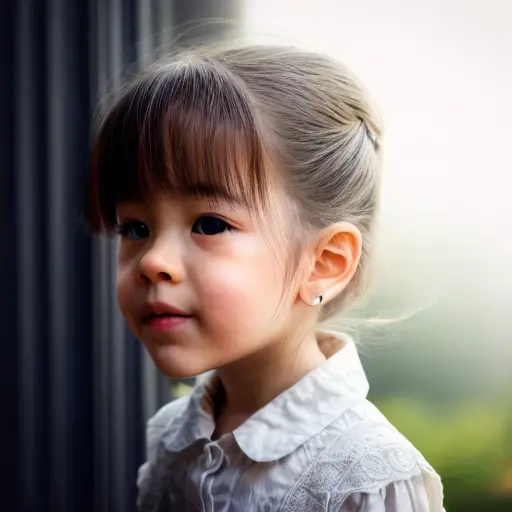The Power of Imagination: Exploring the Role of Creative Art in Child Development
Picture this: a child armed with a paintbrush, a blank canvas, and an imagination that knows no bounds. Creative art is like a magical portal that transports children to a world where anything is possible. It's not just about creating pretty pictures; it's about nurturing their minds, fostering self-expression, and building essential skills. Through the power of imagination, children learn to think outside the box, problem-solve, and embrace their unique perspectives. Whether they're splashing colors on a canvas or molding clay into fantastical shapes, creative art ignites their creativity, boosts their confidence, and allows them to explore the depths of their imagination. So, let's celebrate the wonders of creative art and its pivotal role in shaping the minds of our little Picassos and Van Goghs!
Nurturing Emotional Intelligence: How Creative Art Supports Children's Social and Emotional Growth
One interesting fact about how creative art helps a child's development is that it enhances their cognitive skills. Engaging in creative activities such as drawing, painting, or sculpting stimulates various parts of the brain, including the prefrontal cortex responsible for critical thinking and problem-solving. This helps children develop their cognitive abilities, such as spatial reasoning, attention to detail, and logical thinking. Additionally, creative art encourages children to think outside the box, fostering their imagination and creativity, which are crucial skills for innovation and adaptability in the future.
Imagine a child sitting at a table, engrossed in a world of colors, shapes, and textures. Creative art is not just about creating beautiful masterpieces; it's a powerful tool for nurturing emotional intelligence in children. Through painting, drawing, or sculpting, children learn to express their emotions, whether it's joy, sadness, or anger, in a safe and non-judgmental space. Creative art allows them to explore their feelings, develop empathy, and understand the emotions of others. It encourages self-reflection, boosts self-esteem, and teaches valuable skills like patience, resilience, and problem-solving. So, let's embrace the transformative power of creative art and watch as it helps our little artists navigate the colorful landscape of emotions.
Enhancing Cognitive Abilities: Unleashing the Potential of Creative Art in Developing Critical Thinking and Problem-Solving Skills

Creative art is not just about creating pretty pictures; it is a catalyst for enhancing cognitive abilities in children. When a child engages in artistic activities, they are not only expressing their creativity but also developing critical thinking and problem-solving skills. As they experiment with different materials, colors, and techniques, they learn to make decisions, analyze outcomes, and adapt their approach. Creative art encourages children to think outside the box, explore alternative solutions, and embrace mistakes as opportunities for growth. It fosters curiosity, imagination, and the ability to think flexibly, all of which are essential for success in the ever-evolving world.
Moreover, creative art provides a platform for children to develop their spatial awareness and visual-spatial skills. Whether they are sketching a landscape or building a sculpture, they are honing their ability to perceive and understand spatial relationships. This skill is not only crucial for artistic endeavors but also for subjects like mathematics and science. By engaging in creative art, children are strengthening their cognitive foundation, which will benefit them in various academic and real-life situations.
Furthermore, creative art promotes divergent thinking, which is the ability to generate multiple ideas and solutions. In a world that often values conformity, creative art encourages children to embrace their unique perspectives and explore unconventional approaches. It teaches them to question assumptions, challenge norms, and think critically. By engaging in open-ended artistic activities, children learn to approach problems from different angles, consider multiple possibilities, and develop their own voice. These skills are not only valuable in the realm of art but also in all aspects of life, from personal relationships to professional endeavors.
In conclusion, creative art is a powerful tool for enhancing cognitive abilities in children. It nurtures critical thinking, problem-solving skills, spatial awareness, and divergent thinking. By engaging in artistic activities, children develop the cognitive foundation necessary for success in various academic and real-life situations. So, let's encourage our little artists to unleash their potential, embrace their creativity, and embark on a journey of cognitive growth through the wonders of creative art.
Fostering Self-Expression and Confidence: The Impact of Creative Art on a Child's Personal and Identity Development
Fun fact: Did you know that engaging in creative art activities can significantly enhance a child's development? Not only does it allow them to express their imagination, but it also promotes cognitive, emotional, and social growth. Through art, children can develop problem-solving skills, improve their fine motor skills, boost their self-esteem, and even enhance their ability to communicate and understand emotions. So, the next time your child is doodling or painting, remember that they are not just creating art, but also building a foundation for their overall development!
Creative art is a powerful tool for fostering self-expression and building confidence in children. When a child engages in artistic activities, they are given a platform to express their thoughts, feelings, and unique perspectives. Through painting, drawing, or sculpting, they can communicate their inner world in a way that words often cannot capture. This process of self-expression not only helps children understand and articulate their emotions but also allows them to develop a sense of identity and individuality. Creative art empowers children to embrace their strengths, explore their interests, and celebrate their own unique voice. As they see their ideas come to life on the canvas or in their creations, their confidence grows, and they learn to trust in their own abilities. So, let's encourage our little artists to unleash their creativity, express themselves boldly, and embark on a journey of personal and identity development through the wonders of creative art.

